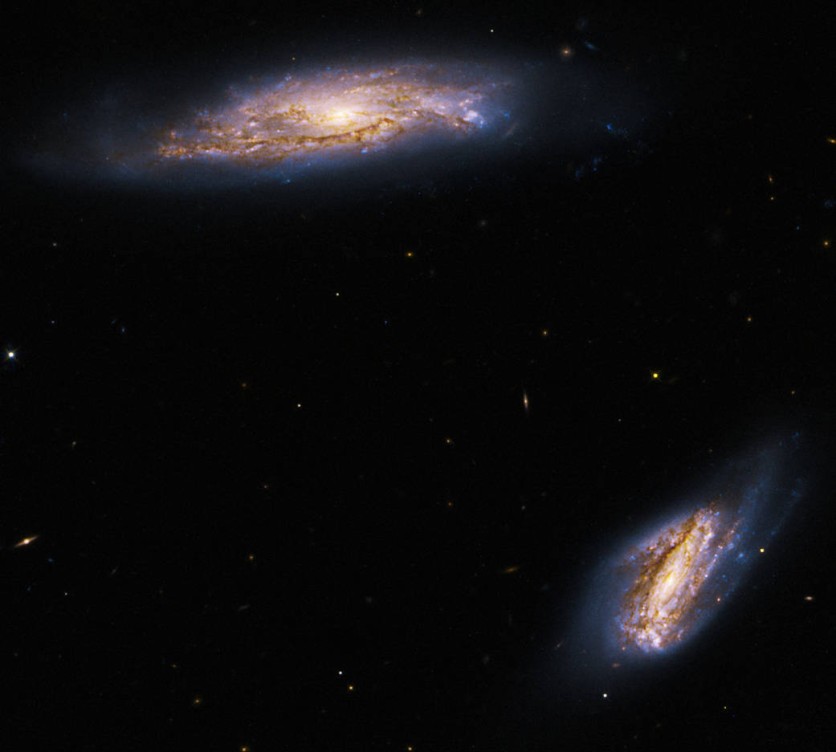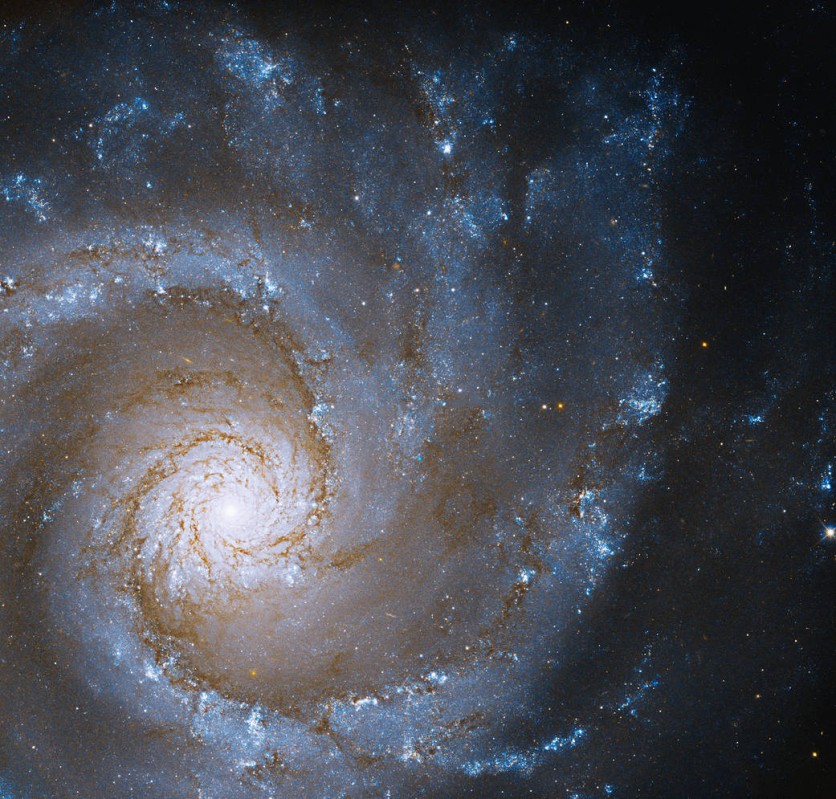NASA's Hubble Space Telescope encountered a gorgeous pair of two spiral galaxies, which are collectively known as Arp 303. The pair glows with a mystic blue aura as they form new stars in this newly-released image on NASA's website.

Hailing All the Way from Sextans
According to NASA, the photo holds data gathered from two separate Hubble observations of Arp 303. The first observation employed Hubble's Wide Field Camera 3 (WFC3) to closely look at the pair's clumpy star-forming regions in infrared light.
As a result, the spiral galaxies IC 563 and IC 564 shine brightly at infrared wavelengths and you can see that they are hosting brilliant star factories.
While the second observation utilized the help of Hubble's Advanced Camera for Surveys (ACS) to take a quick study of bright and peculiar galaxies found in the sky. These observations were able to fill in the gaps in Hubble's archive and considered possible candidates that Hubble, the James Webb Space Telescope, and other telescopes that could observe them further.
The spiral galaxies are rich in deep hues of red, orange, and green that represent infrared wavelengths captured with WFC3, while the glowing blue represents ACS visible-light data.
IC 563 is a Spiral Galaxy that hails all the way from the Sextans constellation. According to The Sky, this galaxy is located close to the celestial equator and is partly visible from both hemispheres depending on specific times of the year.
Sextans constellation is found in the southern sky, on the celestial equator. It lies in a dim region between the constellations Crater, Leo, and Hydra. This constellation was discovered by Polish astronomer Johannes Hevelius in the 17th century.
Sextans is relatively a faint constellation since it only has one star brighter than the fifth magnitude. But the constellation holds many remarkable sky objects - such as the Spindle Galaxy or the NGC 3115, the irregular galaxies called Sextans A and Sextans B, and the spiral galaxies NGC 3166 and NGC 3169.
It also houses the most distant known galaxy cluster called CL J1001+0220 and the Cosmos Redshift 7 galaxy, which is believed to hold stars that were generated after the Big Bang.
The Grand Design Galaxy
Meanwhile, on Thursday, NASA's Hubble Space Telescope featured a stunning image of the Grand Design Spiral Galaxy called NGC 3631, which is found 53 million light-years away in the direction of the constellation Ursa Major, according to NASA.
The grand design spiral is seen flexing its arm that looks like it's winding around and into the galaxy's nucleus.

Upon closer observation of its grand spiral arms, dark dust lanes and bright star-forming regions can be found along the inner part of the arms. According to NASA, star formation along spirals appears like a traffic jam on the interstate - like cars on the road. The traffic jam of matter can be so dense that it can collapse gravitationally and generate new stars in the process.
Related Article : NASA's Hubble Telescope Looks Into 'Needle's Eye' of Dwarf Spiral Galaxy With Strange Void
This article is owned by Tech Times
Written by Joaquin Victor Tacla
ⓒ 2025 TECHTIMES.com All rights reserved. Do not reproduce without permission.




